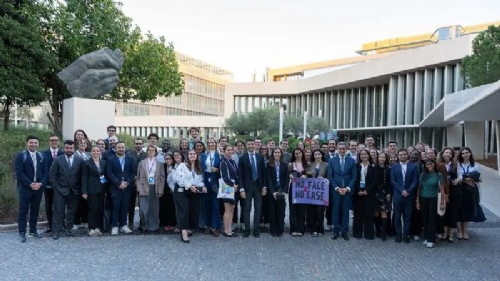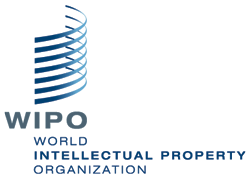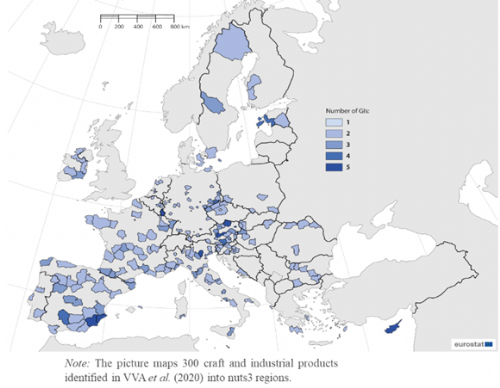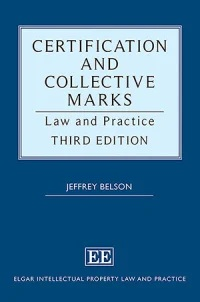Now in its twelfth year, Class 46 is dedicated to European trade mark law and practice. This weblog is written by a team of enthusiasts who want to spread the word and share their thoughts with others.
Click here subscribe for free.
Who we all are...
Seasonís Greetings
 MARQUES wishes all our members, their colleagues and families, as well as all readers of the Class 46 blog, a Merry Christmas and Happy New Year!
MARQUES wishes all our members, their colleagues and families, as well as all readers of the Class 46 blog, a Merry Christmas and Happy New Year!
During the festive period, you can continue to engage with MARQUES on social media and view the resources on the website.
Please note however that the MARQUES Secretariat will close after business hours on 23rd December and reopen on Monday 5th January.
Any communications received during the festive period will be actioned after 5th January.
MARQUES has big plans for 2026, including the 40th Annual Conference, in Lisbon in September, and the first Design Symposium, in Frankfurt in January. View the events page to find out more.
We look forward to seeing members at these and other events during the year.
Picture created by MARQUES
Posted by: Blog Administrator @ 11.45Tags: Christmas, New Year, Lisbon, ,


 Sharing on Social Media? Use the link below...
Sharing on Social Media? Use the link below...Perm-A-Link: https://www.marques.org/blogs/class46?XID=BHA5413
Copyright, AI and the EUís next steps
 Pigi Konstantinou of the MARQUES Copyright Team shares some takeaways from EUIPO’s first copyright conference.
Pigi Konstantinou of the MARQUES Copyright Team shares some takeaways from EUIPO’s first copyright conference.
The EUIPO held its first-ever copyright conference at its headquarters in Alicante on 20–21 November 2025, marking a clear strategic shift of the Office toward deeper engagement with copyright matters.
The event celebrated the launch of the new EUIPO Copyright Knowledge Center, which provided the framework for two days of rich discussions, insightful presentations and various cultural activities.
The audience reflected the diversity of the copyright ecosystem: policy makers, major tech companies, academics, performers’ and authors’ representatives, as well as copyright experts and IP practitioners.
In parallel with the main sessions, the EUIPO hosted live concerts, dance performances, local creators showcasing handmade works, the unveiling of a mural, DJ sets, and a renowned visual artist drawing live throughout the conference.
Key takeaways from the presentations
A central theme was the EUIPO’s expanding role in the copyright field. The Office presented its ongoing initiatives, such as the Out-of-Commerce Works Portal, the Orphan Works Database, and AGORATEKA, and explained the mission of the Knowledge Center: to provide an authoritative hub for copyright-related news, case law, studies, and training materials and to support policy dialogue.
A forthcoming Copyright View service aims to enhance access to information on copyright status, authorship and rights ownership across Europe.
CJEU perspective
Maciej Szpunar, First Advocate General at the CJEU, stressed the crucial role of the Court in interpreting core legal notions amid fast-moving technological developments. He identified key structural challenges the internet and digital technologies pose to copyright law:
- Erosion of territoriality
- Transformation of storage, transmission and access to information
- Uncertainty surrounding exhaustion in the digital environment
- Reconfiguration of liability rules, with secondary liability becoming more central than primary infringement
- Increasing tension among fundamental rights and the need to balance them
He also referred to two of his recent opinions: HP Netherlands (C-496/24) on the private copy exception and Meta Platforms Ireland (Case C-797/23) on the press publishers’ right.
Ensuring cultural diversity in the age of AI
Professor Martin Senftleben focused on safeguarding both fair remuneration for authors and the cultural diversity of AI systems, an urgent priority, in his view. His proposals favoured regulating AI outputs rather than restricting inputs and emphasised collective licensing schemes as a more viable solution than individual licensing.
He outlined a model in which AI systems freely mine works, combined with levies at market entry and collective management of remuneration, with an opt-out pathway for rights holders seeking individual licensing.
Regulatory horizons: towards a General Copyright Regulation?
MEP Axel Voss underscored the persistent need for updated legislation. He floated the possibility of a General Copyright Regulation, analogous to the GDPR, to overcome fragmentation arising from national divergences.
Article 4 of the DSM Directive, he clarified, was never designed to address generative AI. In his view, the solution lies in licensing mechanisms and transparency obligations grounded in international law.
Mr Voss also advocated for the creation of an EUIPO-managed opt-out register, providing standardised, machine-readable notices for AI developers and potentially operating as a one-stop-shop licensing interface.
Creators’ concerns
Artists’ and authors’ representatives repeatedly stressed the importance of awareness, noting unequal national protection standards and the rapid evolution of AI tools. While many expressed concerns, some acknowledged new creative opportunities offered by AI.
Interestingly, the much-debated idea of an EUIPO copyright registration system remained largely peripheral. Nonetheless, collecting societies such as GEMA voiced significant reservations regarding its feasibility and effect on existing rights management structures.
Conclusion
The conference marked an important first step in the EUIPO’s growing involvement in copyright policy. How this initiative will unfold, especially in the complex landscape of generative AI, remains to be seen.
What is clear is that the conversation has begun, and the Office now stands at the threshold of shaping a more coherent and future-proof European copyright framework.
Pigi Konstantinou is a partner at Souriadakis Tsibris, Greece and a member of the MARQUES Copyright Team
Read more about the Copyright Conference, and view recordings of the sessions, on EUIPO’s website here, from where the picture above is taken
Posted by: Blog Administrator @ 09.01Tags: EUIPO, copyright, AI,


 Sharing on Social Media? Use the link below...
Sharing on Social Media? Use the link below...Perm-A-Link: https://www.marques.org/blogs/class46?XID=BHA5412
Thirteenth edition of Nice Classification
 WIPO has announced that the 13th edition of the Nice Classification will take effect on 1 January 2026.
WIPO has announced that the 13th edition of the Nice Classification will take effect on 1 January 2026.
New editions of the Nice Classification are published every three years, with annual updates to each edition.
In the new edition, certain goods and services have been reclassified. You can review the changes on WIPO’s website here.
The new edition will apply to all new applications received by offices of origin from 1 January 2026 and any application that WIPO receives from 1 January 2026 after the two-month time limit referred to in Article 3(4) of the Madrid Protocol.
Existing trade mark applications do not need to be reclassified.
The goods and services manager in eMadrid will be updated on 1 January 2026.
For more information, read the announcement on WIPO’s website here.
Posted by: Blog Administrator @ 08.52Tags: Nice, Madrid, WIPO,


 Sharing on Social Media? Use the link below...
Sharing on Social Media? Use the link below...Perm-A-Link: https://www.marques.org/blogs/class46?XID=BHA5411
EU activates protection on CIGI products
As of 1 December 2025, Regulation (EU) 2023/2411 on the protection of Craft and Industrial Geographical Indications (CIGIs) applies. That means that registration for said names can be filed and benefit, under certain conditions, from EU-wide protection. María Ceballos of the MARQUES GI Team reports.
Introducing CIGIs
As discussed in the Talking MARQUES podcast and at one of the workshops during last Annual Conference in The Hague, until now protection in the EU for craft and industrial products had not been harmonised: only some EU countries granted it, under different figures, scopes and administration.
The existing GI system has so far been applicable only to agricultural GIs (AgriGIs), which up to date protects more than 3,600 names of wines, food and spirit drinks. The CIGI system is similar in many aspects to that of AgriGIs.
 Protection of a CIGI is granted by registration, under the figure of Protected Geographical Indication (PGI) (note that some food and wines GIs are protected as Protected Designations of Origin (PDOs), and spirit drinks strictly as Geographical Indications (GIs), but all enjoy the same scope of protection). Once a product name has been registered as a GI, producers may use the corresponding EU symbol, which in case of a “PGI” is shown on the right.
Protection of a CIGI is granted by registration, under the figure of Protected Geographical Indication (PGI) (note that some food and wines GIs are protected as Protected Designations of Origin (PDOs), and spirit drinks strictly as Geographical Indications (GIs), but all enjoy the same scope of protection). Once a product name has been registered as a GI, producers may use the corresponding EU symbol, which in case of a “PGI” is shown on the right.
The EU GI Register, the official record of all protected GIs, is accessible through the public database GIview.
Registration requirements
With the new system, protection as a GI is granted not only to ‘craft products’, which are those produced either entirely by hand or with the aid of manual or digital tools or by mechanical means whenever the manual contribution is an important component of the finished product; but also to ‘industrial products’, namely those produced in a standardised way, including serial production and the use of machines.
To succeed in the registration of a CIGI, three cumulative requirements must be met:
- The product should be rooted in or originate in a specific place, region or country;
- At least one of the production stages (such as storage, processing, packaging) should take place in the defined geographical area; and
- At least one quality or characteristic of the product shall be attributable to the area.
Producers may apply through a producer group or a single producer under certain conditions. Each application must include, among other documents, a “product specification” outlining the name, production process and geographical area.
Applicants in most EU Member States shall follow a two-step registration process (Standard procedure), starting at national level, when the authority may charge fees, review the application and run a national opposition procedure; and continuing at EU level: the application is then assessed by the EUIPO, whose GI Division handles the EU-wide opposition procedure and decides on protection and registration.
Exceptionally, and because (among other reasons) they have no system at national level in place to manage CIGIs, the EU Commission has allowed applicants from Denmark, Finland, Lithuania, Luxembourg, Malta, the Netherlands and Sweden to follow a one-step process (Direct procedure) and apply directly to the EUIPO.
Applications for products originating in non-EU countries must be filed before the EUIPO either by the applicants or through the competent authorities of their countries.
Those names which were already protected in a Member State, under national norms, can follow a fast-track registration process before EUIPO, with no opposition procedure. This new EU system will replace the previously existing national norms for craft and industrial products, if there are any.
Detailed information about the filing process is available on the GI Hub on the EUIPO website and the GIportal information page.
Scope of protection
CIGIs will enjoy the same scope of protection as AgriGIs and be protected against any direct or indirect commercial use of a registered name, but also against any imitation, evocation, any other false or misleading indication and any other practice liable to mislead the consumer as to the true origin of the product. This applies even when the true origin of the product is indicated or when expressions such as “type”, “style” or similar are used. CIGIs will also be protected against use in e-commerce and the registration of domain names that reproduce or evoke the GI.
 As evidenced with the Agri-GIs in the past 30 years, this enhanced protection framework contributes decisively to preserving the reputation of products that, in many cases, have been linked to a particular territory for centuries and brings many social and cultural benefits. PGIs boost cultural and heritage tourism in their region of origin, safeguard traditional skills, support local employment and help consumers recognise genuine, high-quality European products.
As evidenced with the Agri-GIs in the past 30 years, this enhanced protection framework contributes decisively to preserving the reputation of products that, in many cases, have been linked to a particular territory for centuries and brings many social and cultural benefits. PGIs boost cultural and heritage tourism in their region of origin, safeguard traditional skills, support local employment and help consumers recognise genuine, high-quality European products.
CIGIs will be particularly useful as hundreds of products have been identified as potentially eligible for GI protection in the EU, including a wide range of goods, such as glassblowing, pottery, cutlery, jewellery, shoes, textiles, porcelain and musical instruments. A map (2020, shown above right) shows up to 300 craft and industrial products in different EU regions.
This new protection completes the EU market for GIs and will offer a unique economic opportunity for craft and industrial producers to improve access to high value market. Cheers to that!
María Ceballos is a partner of Curell Suñol and a member of the MARQUES GI Team
Posted by: Blog Administrator @ 11.59Tags: CIGI, EU, GI Team,


 Sharing on Social Media? Use the link below...
Sharing on Social Media? Use the link below...Perm-A-Link: https://www.marques.org/blogs/class46?XID=BHA5410
Final report makes UDRP recommendations
The final report of the UDRP Review led by the WIPO Arbitration and Mediation Center and the Internet Commerce Association (ICA) has been published and is available on WIPO’s website here.
The report was a comprehensive effort by UDRP users and is intended to support ICANN’s formal GNSO policy procedures.
The goal was to protect the UDRP. The recommendations and insights in the final report provide ICANN’s GNSO Council with a clear path forward.
A number of recommendations were identified as very likely to achieve consensus and which are readily implementable.
| "We are confident this Report will prove useful for ICANN’s chartering Phase II of the RPM review, and indeed on the substantive work that follows." |
It is suggested that these updates can be agreed upon – and implemented – before every item identified in a Charter needs to be tackled and consensus reached. This has the added benefit of not overloading the UDRP – which has been working very well for 25 years – with too many changes all at once, giving practitioners, parties, panellists and providers all a chance to adjust to any changes made.
The review also identified topics of broad agreement in principle, but where additional work is required on implementation particulars. These recommendations can follow the readily implemented ones if consensus is reached.
Certain topics were identified where there is recognition that a solution or agreed direction has not yet been determined and that further study and consensus building may be warranted. Finally, a few topics were identified where we recommend that the status quo remain.
Brian Beckham of the WIPO Center told MARQUES: “We are confident this Report will prove useful for ICANN’s chartering Phase II of the RPM review, and indeed on the substantive work that follows. And we are encouraged by our longstanding relationship to count on MARQUES’ and members advocacy across ICANN for maximum impact on this Report for the future health of the UDRP.”
The MARQUES Cyberspace Team concerns itself, inter alia, with domain names, gTLDs, the UDRP procedure and its revision. The Team provided the following comments on the final report:
We are of the opinion that the UDRP is a great and efficient procedure which has worked well for 25 years and in over 120,000 UDRP cases, helping to tackle cross-border infringement in the domain name system. It is an effective answer to situations that cannot be diligently dealt with by courts.
The Team welcomes the final report and takes the view that is an excellent piece of work by the WIPO-ICA UDRP Team and respective stakeholders. However, we see the risk that it may not be accepted by the wider ICANN community. Further, we were hoping that the issue of the financial burden would be addressed by a “loser pays systems” or at least that the loser contributes more towards the costs. Currently, it is the brand owners who generally have to pay the fees and have no possibility of reimbursement. Also, the Team sees the need to implement procedures in relation to ICANN registrars which are not compliant with ICANN regulations.
Further, in view of our day-to-day practice and the infringements that companies are currently facing, we see the need to further address pressing DNS issues such as the impact of AI in relation to AI-assisted domain abuses, including fake websites, coned storefronts and phishing pages or other “impersonation” of brands.
Posted by: Blog Administrator @ 10.56Tags: UDRP, WIPO, ICA, Cyberspace,


 Sharing on Social Media? Use the link below...
Sharing on Social Media? Use the link below...Perm-A-Link: https://www.marques.org/blogs/class46?XID=BHA5409
Book Review: Certification and Collective Marks
 Charlotte Duly of the MARQUES Education Team reviews “Certification and Collective Marks, Law and Practice”, third edition by Jeffrey Belson (published by Edward Elgar Publishing, priced £165 for the hardback and available here).
Charlotte Duly of the MARQUES Education Team reviews “Certification and Collective Marks, Law and Practice”, third edition by Jeffrey Belson (published by Edward Elgar Publishing, priced £165 for the hardback and available here).
The third edition of the go-to reference on collective and certification marks contains important updates on these fairly niche and interesting types of trade marks. This book remains the only complete volume devoted to certification and collective marks and covers multiple jurisdictions including the UK, EU and the US.
This latest edition features developments such as the introduction of geographical indications (GIs) for non-agricultural products in the EU.
This book is a must-read text for legal practitioners in this field, covering a thorough analysis of the relevant laws, and the background and development of these specialist trade marks and standards more generally.
The text explains in accessible detail the roles of various standard setting bodies globally such as the World Trade Organization (WTO), International Organisation for Standardisation (ISO) and the International Electrotechnical Commission (IEC) along with the WTO General Agreement on Tariffs and Trade (GATT) system. The complexity and breadth of the subject matter certainly warrants its own text.
As this edition has been published post-Brexit (we cannot escape this topic), the EU CE marking scheme is discussed in the context of the implications on the UK’s withdrawal and the creation of the UKCA mark.
UKCA marking now applies in the UK to most products for which the CE mark was previously used. The interplay with the CE mark is discussed and there is a useful explanation of the various European technical standards bodies.
Expanded on and updated from the previous editions is the section on eco labelling and the ever increasing importance of environmental claims. The issue for dealing with eco labels, such as complaints to the UK Advertising Standards Authority (ASA) is covered, as is regulation of this topic elsewhere, such as the US.
France’s carbon neutrality claims legislation is also covered, making this an extremely wide-ranging source that will be useful to many who want to make green claims or consider challenging those who have done so.
This edition also includes a section dedicated to the electronic authentication of products, a continually evolving field which is helpfully explained.
The lack of texts on certification and collective marks is perhaps reflective of the fact they are complicated and there are multiple layers that need to be considered, including where marks may not be a true certification or collective mark under the legislation but may act as one.
The latest edition of this is an incredibly valuable asset to trade mark practitioners and wider intellectual property community, and is likely to be a well-utilised resource for those working in the field or in the ancillary areas touched on such as environmental claims.
Posted by: Blog Administrator @ 16.25Tags: book review, certification marks, collective marks,


 Sharing on Social Media? Use the link below...
Sharing on Social Media? Use the link below...Perm-A-Link: https://www.marques.org/blogs/class46?XID=BHA5408
New podcast on deepfakes
 Episode 30 of the Talking MARQUES podcast is now live and available on the MARQUES website and on Spotify.
Episode 30 of the Talking MARQUES podcast is now live and available on the MARQUES website and on Spotify.
This episode looks at the latest developments regarding deepfakes.
It follows up on a very well-received session on the same topic at the MARQUES Spring Meeting in Barcelona earlier this year.
The podcast is moderated by Liza Erazo and features Julia Holden, Howard Shire and Maiken Toftgaard. Liza, Julia and Maiken are members of the MARQUES Copyright Team while Howard is a member of the Education Team.
In the podcast, they introduce the topic of deepfakes and explain why this has become an important issue.
Maiken summarises current legislation regulating deepfakes in the EU, focusing on the rules on manipulated content in the Digital Services Act. She also discusses rules in Denmark, including proposed changes to the Copyright Act to tackle digital imitations.
Howard introduces the recently passed Take It Down Act in the US, which concerns intimate images, as well as state laws and First Amendment issues.
Finally, Julia discusses the relevant parts of the EU AI Act and the new criminal provisions regarding deepfakes in Italy.
New episodes of Talking MARQUES are posted every few weeks. Other recent episodes have covered the MARQUES Design Symposium; Misleading invoices and payment requests; and Brand valuation.
Look out for further episodes in 2026!
Posted by: Blog Administrator @ 12.37Tags: Talking MARQUES, podcast, deepfakes,


 Sharing on Social Media? Use the link below...
Sharing on Social Media? Use the link below...Perm-A-Link: https://www.marques.org/blogs/class46?XID=BHA5407

